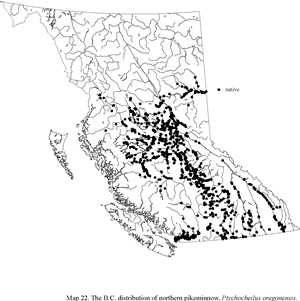Dorsal soft rays (total): 9 - 10; Anal soft rays: 8 - 9; Vertebrae: 44 - 46. Mot deep bodied, greatest depth 16.6% (TL), belly gently rounded in mature individuals. Head moderately long, its length 22.8% (TL); eye small in adults, 17.6% of head length, but larger in young 7.6 cm long, when 25.2% of head length; snout long, 33.1% of head length of adults; interorbital width 29.6% of head length; mouth large, extending back to below anterior margin of eye. All fins clear. Pelvic axillary process usually a ridge. Peritoneum present. Nuptial tubercles fine, on head and back, on pectoral and pelvic fins and sometimes on the caudal fin. Dark green or green-brown dorsally becoming silvery white or cream ventrally. The lower fins of the males become yellow or yellow-orange during spawning period.
Source: FishBase. Page, L.M. and B.M. Burr 1991 A field guide to freshwater fishes of North America north of Mexico. Houghton Mifflin Company, Boston. 432 p.
